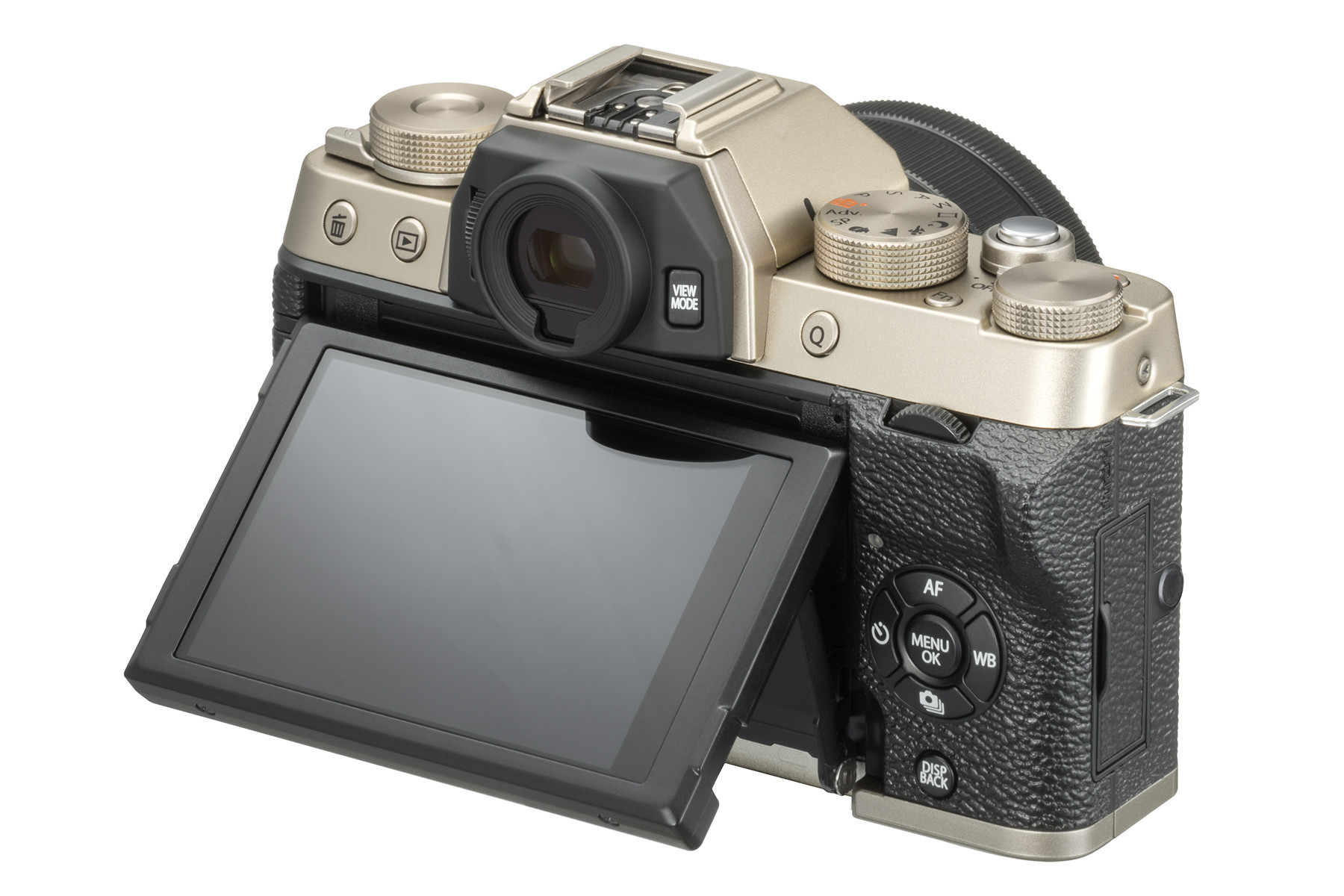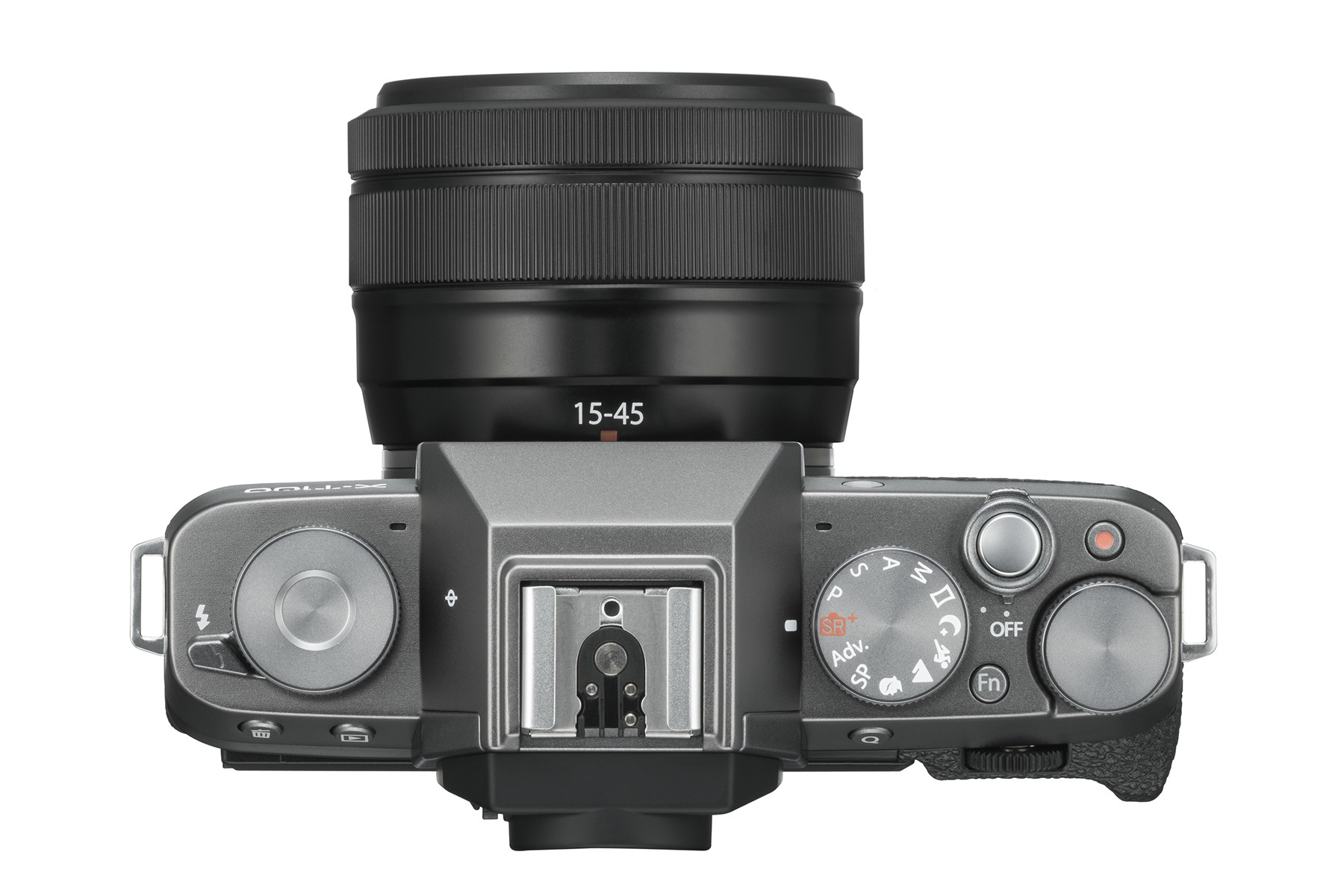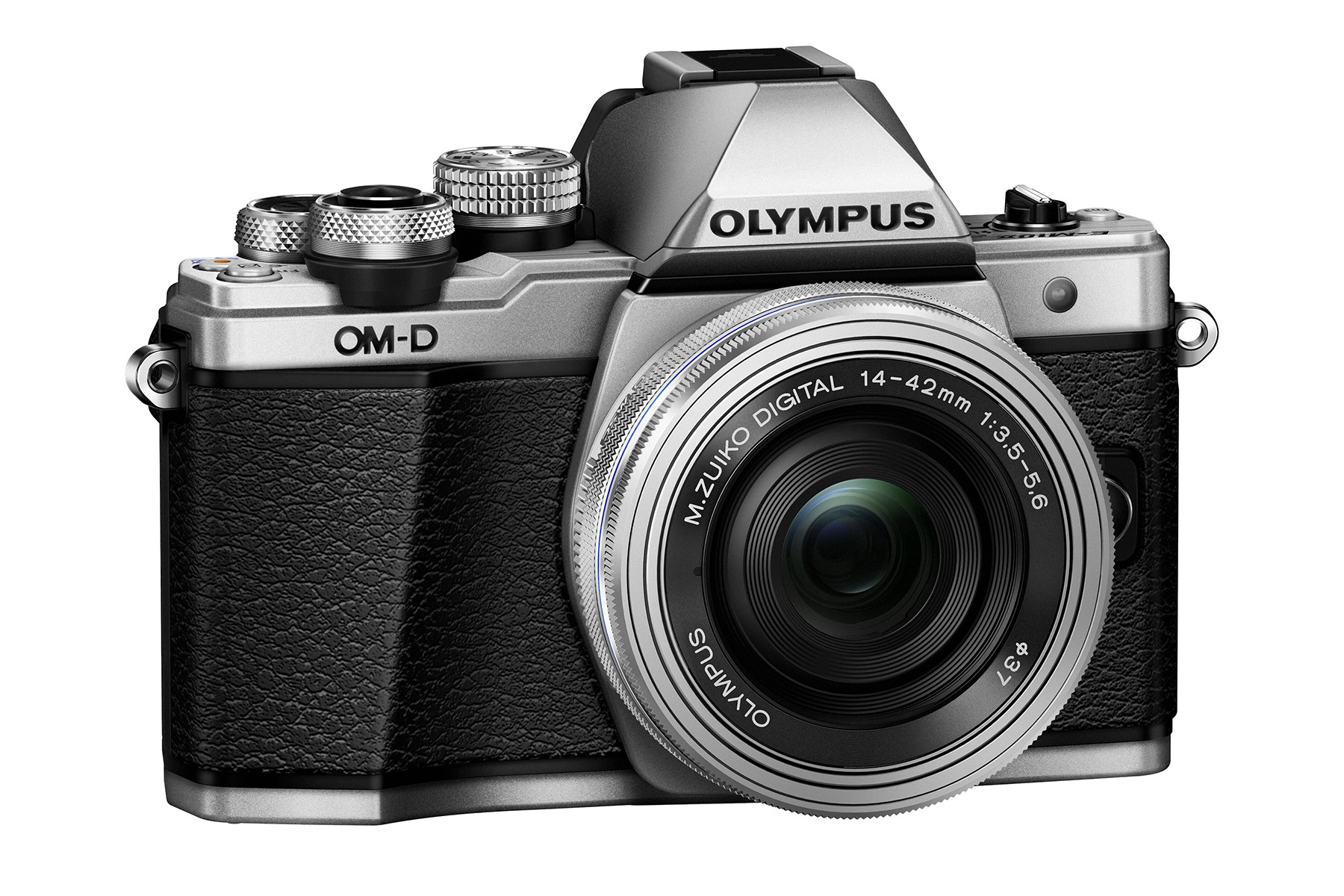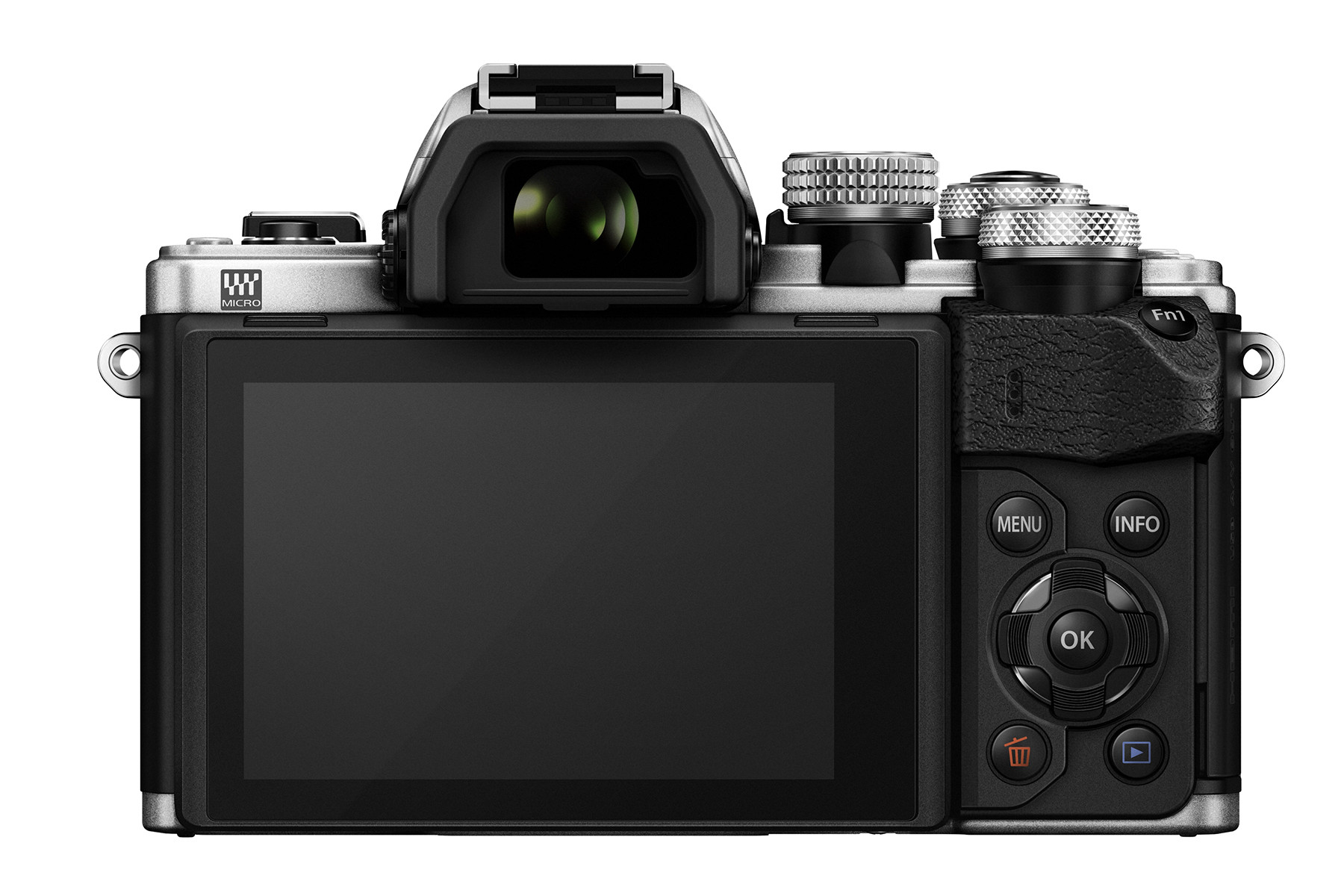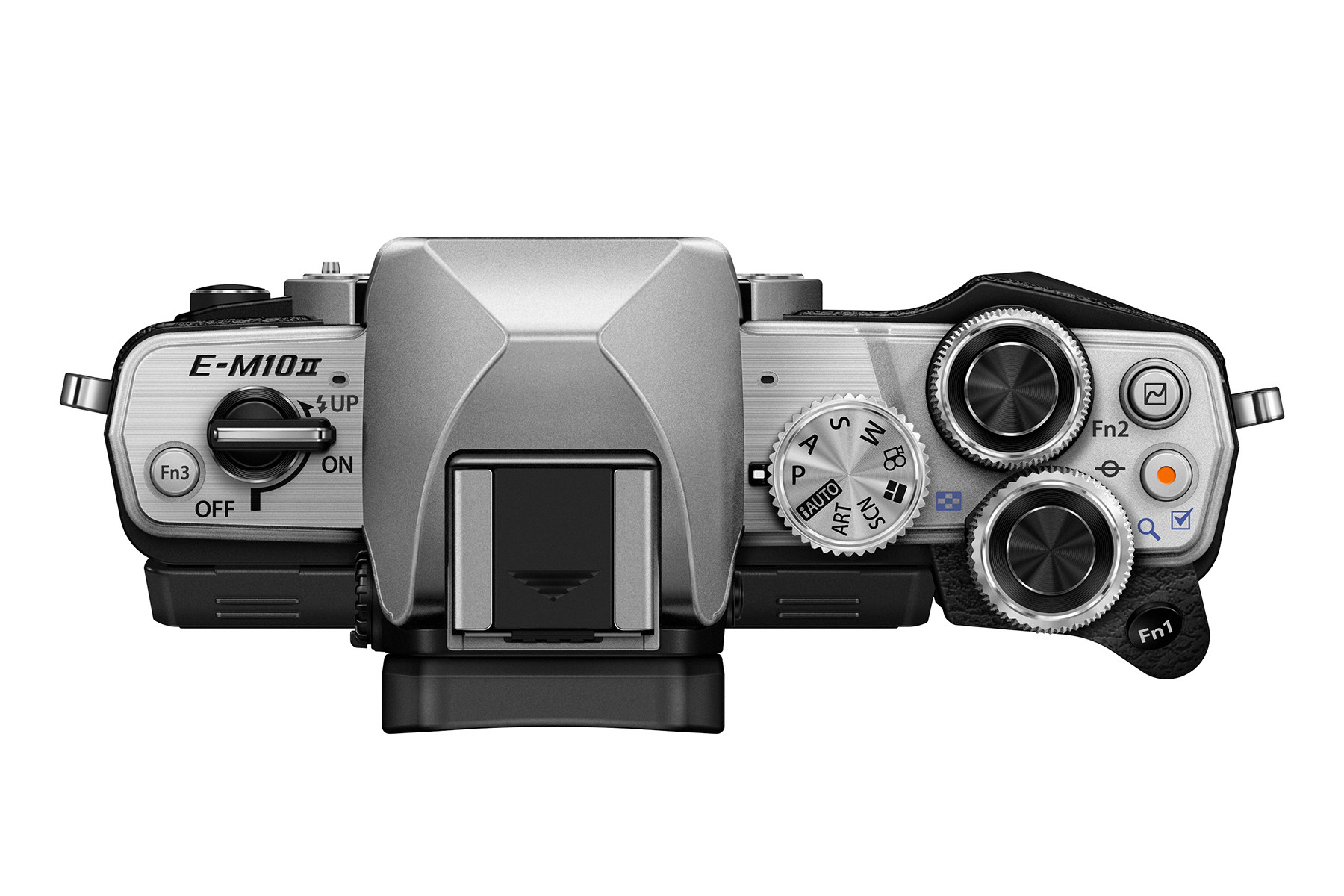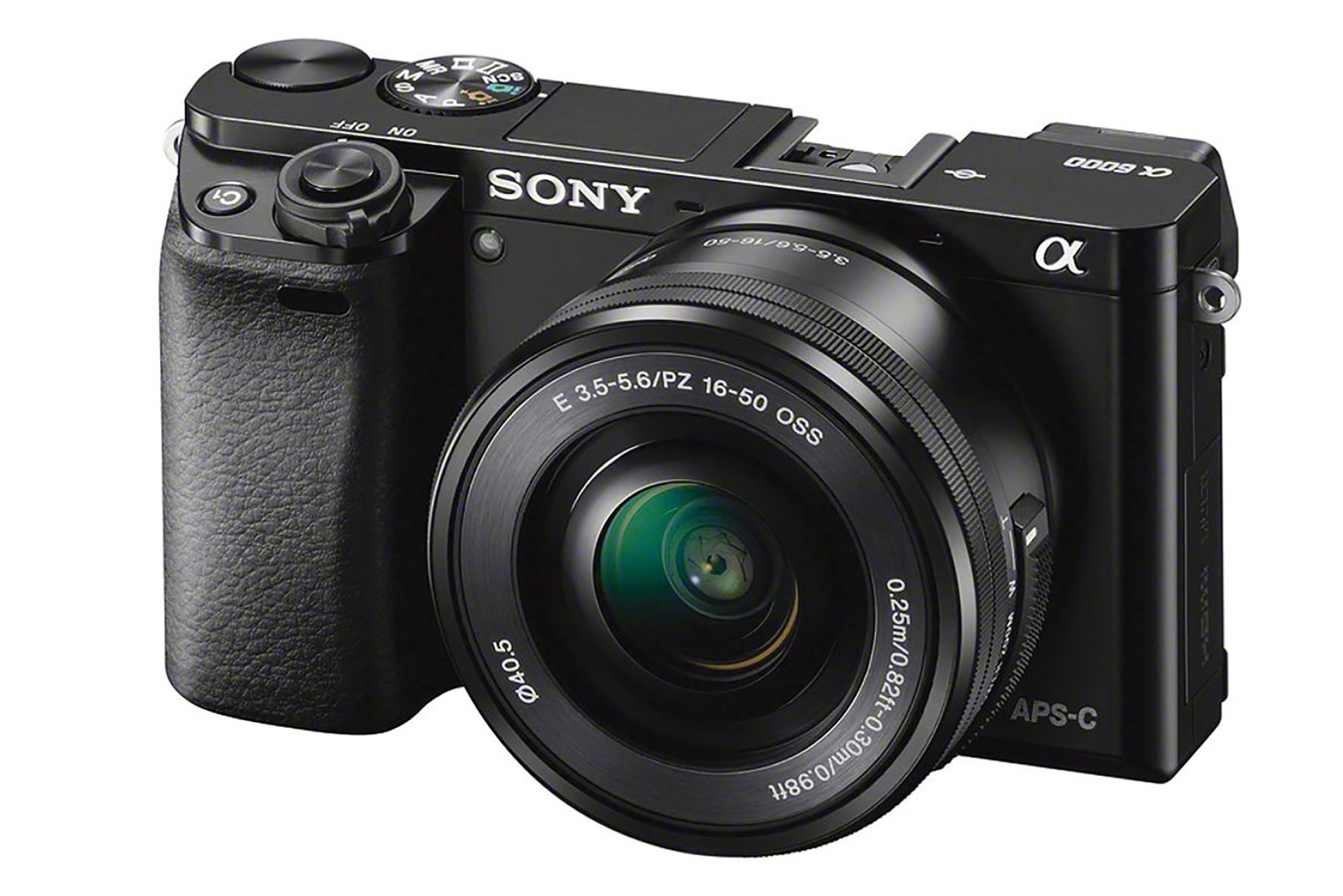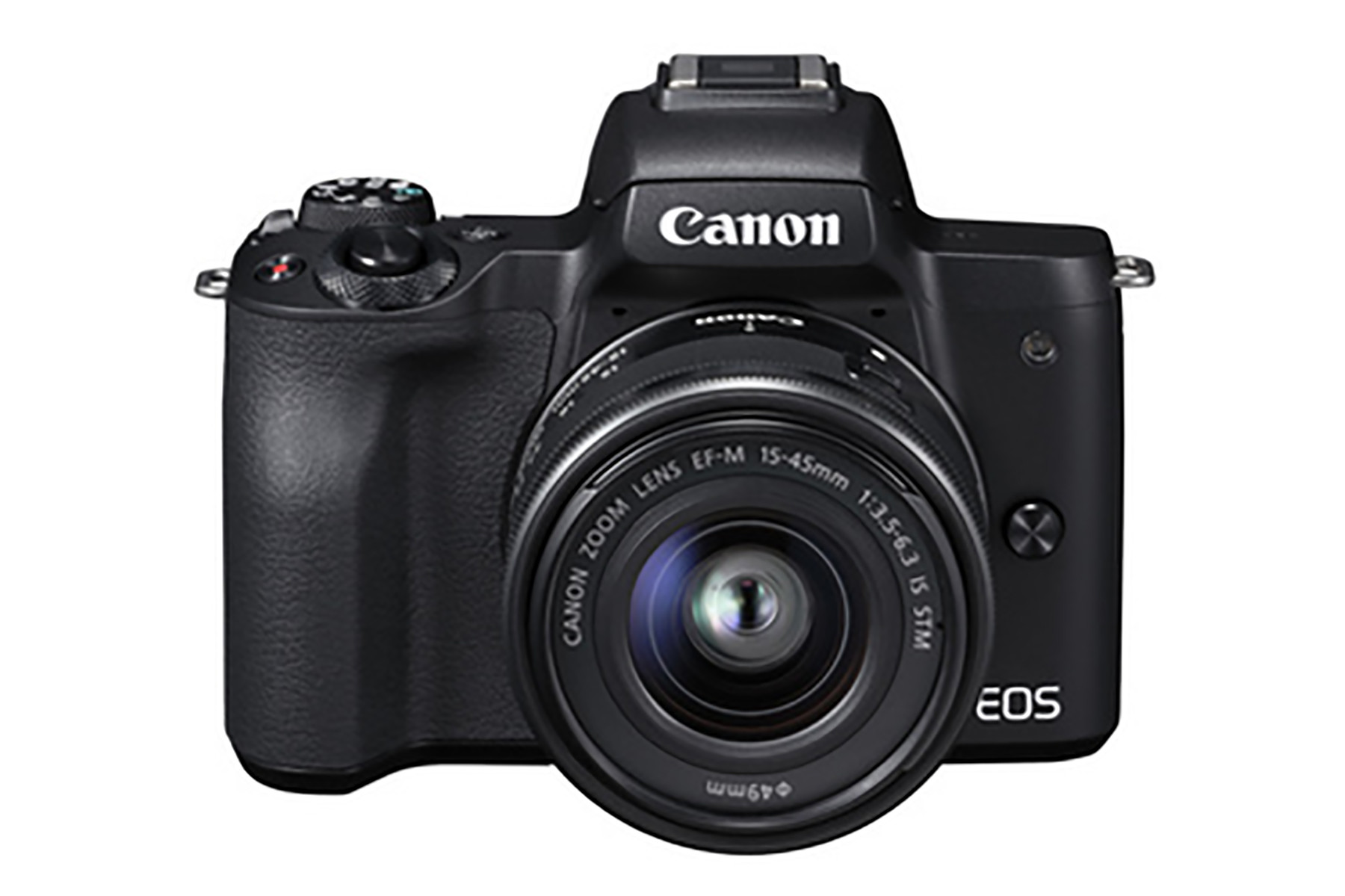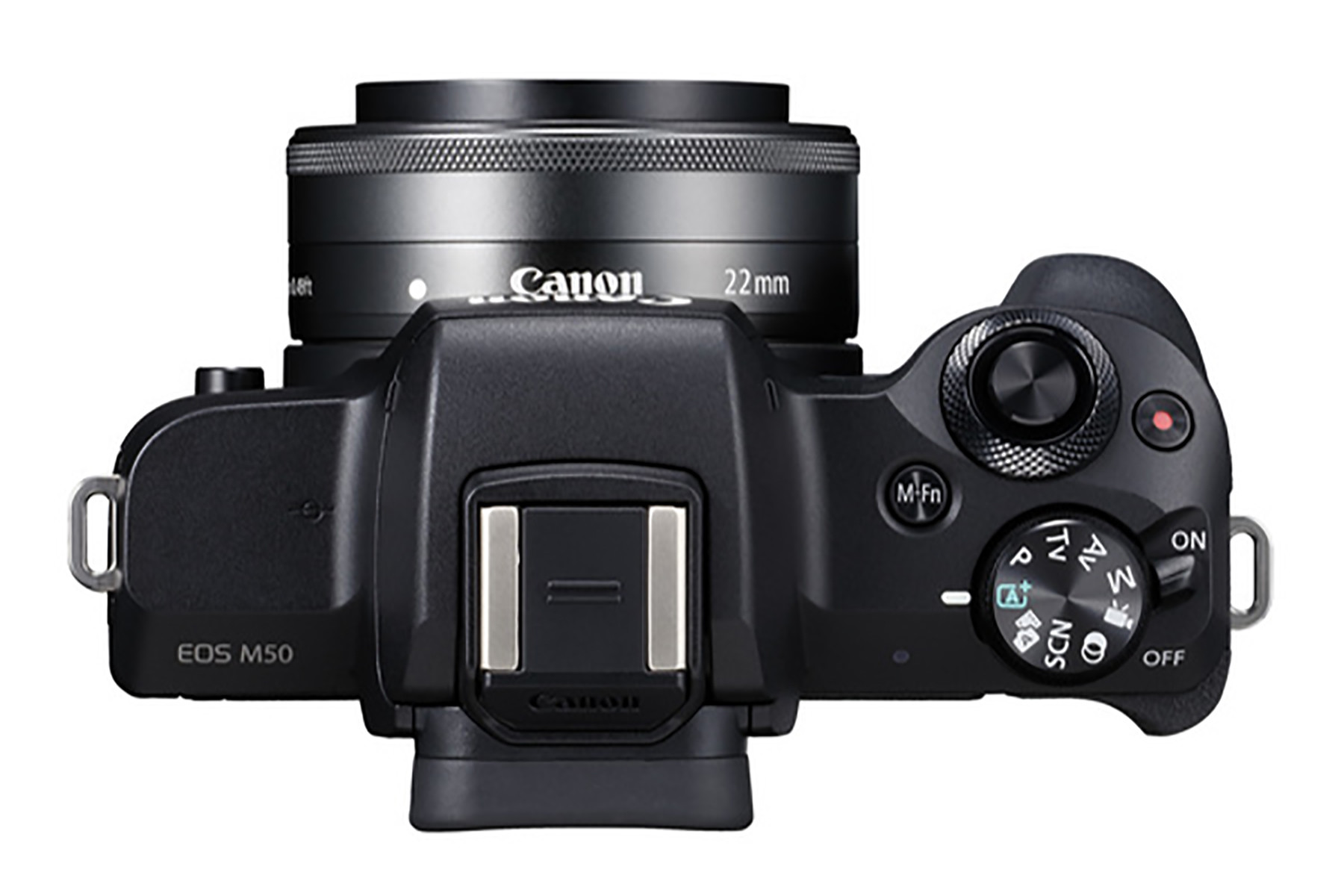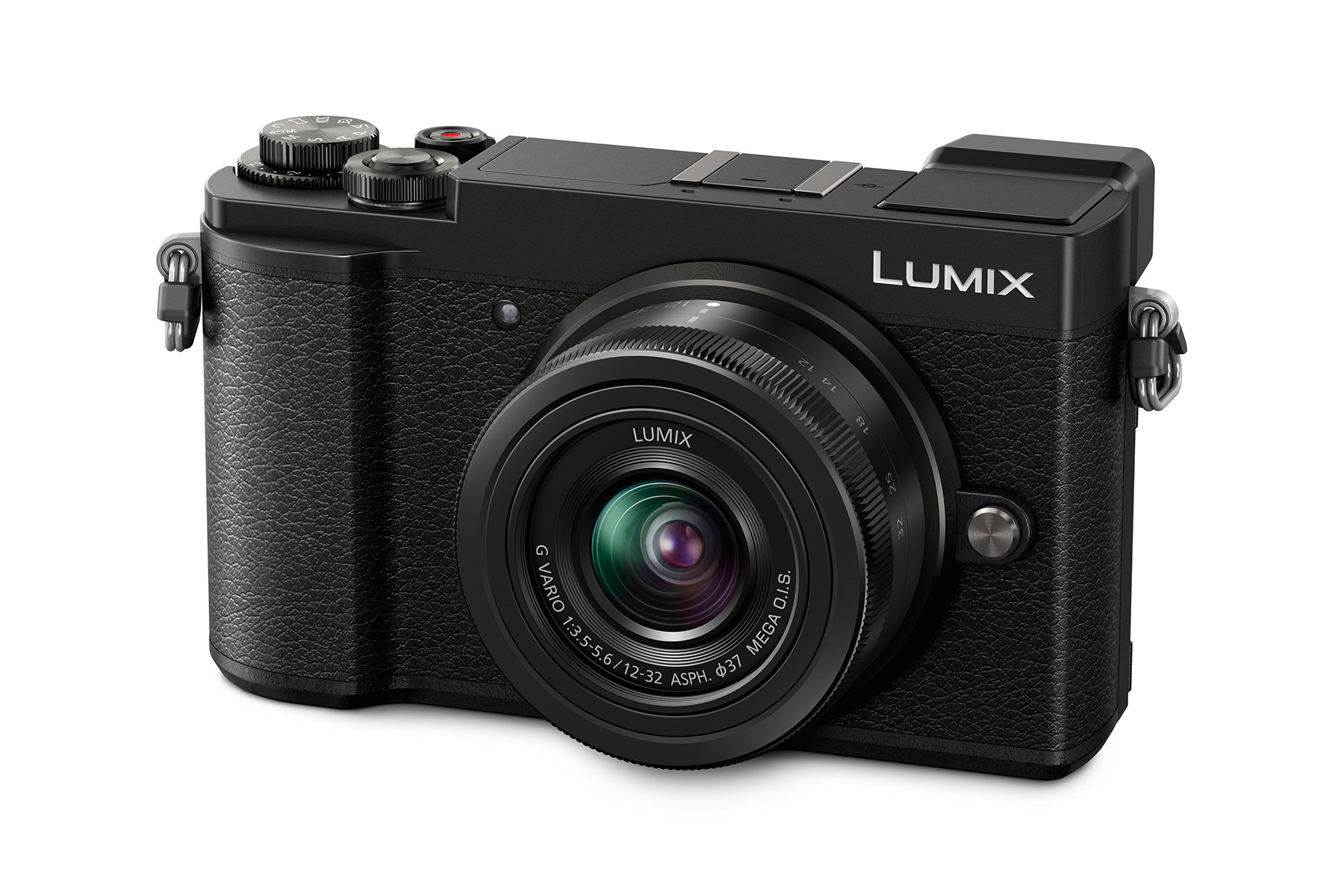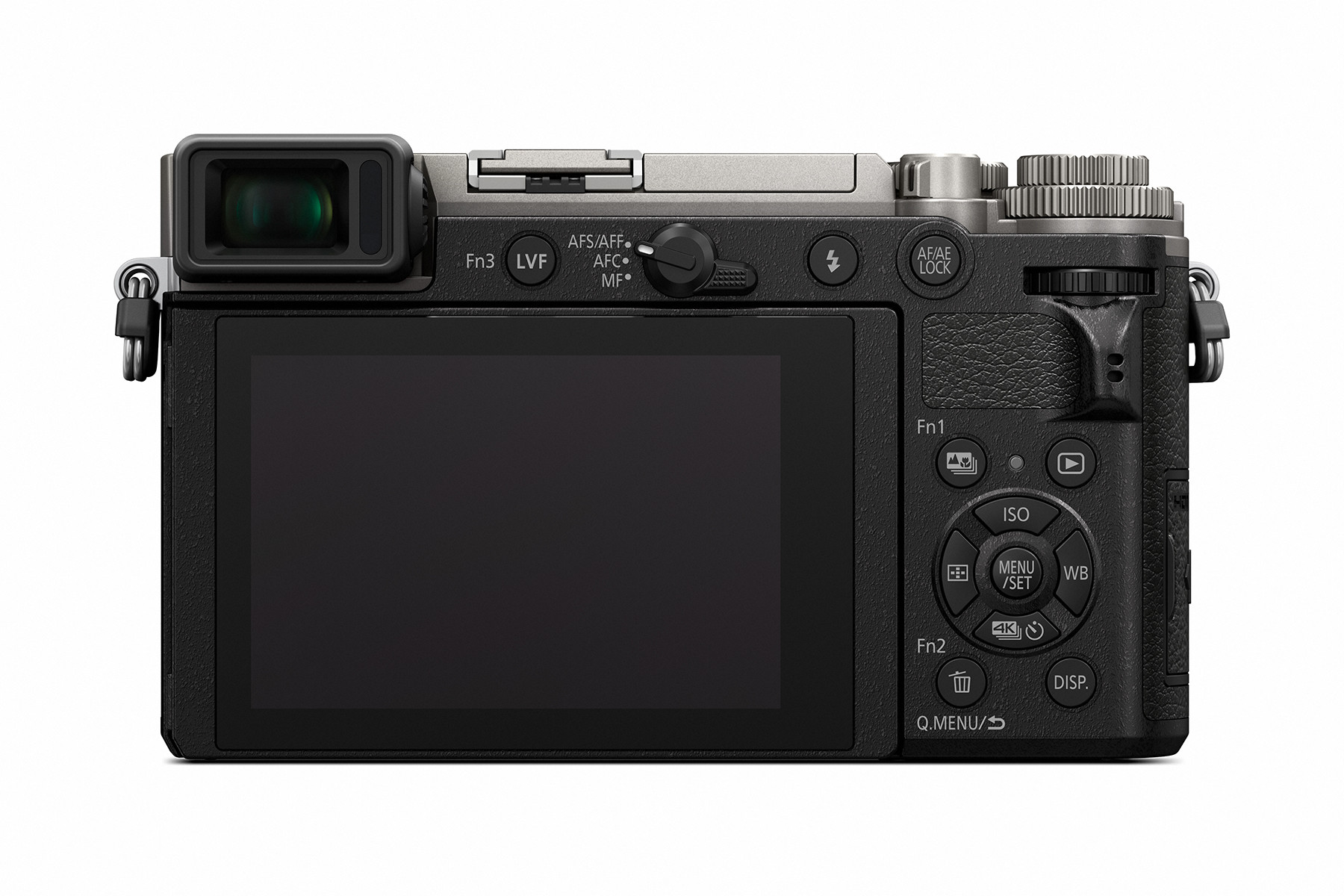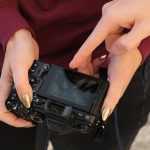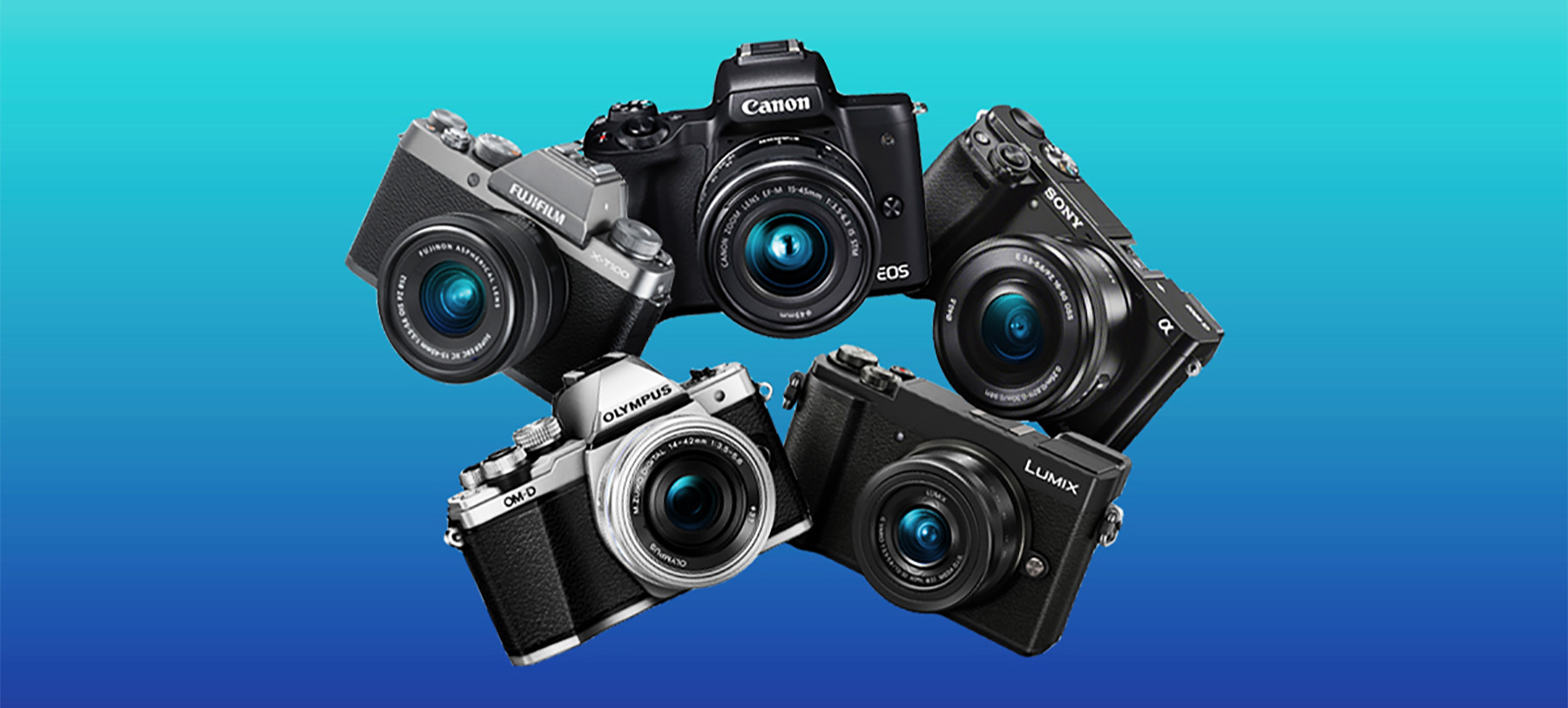
Five of the best mirrorless cameras for beginners
Choosing a camera can be daunting business, particularly for a beginner, but we’re here to help with these five great options.
Read time: 8 minutes
Maybe you’ve been shooting for a while on your smartphone, compact or even bridge camera, or maybe you’re looking to dive into photography with a camera you know you’ll use for years to come. In either case, any one of these mirrorless systems would be a great option.
Before we get into them, though, let’s take a quick look at what a mirrorless camera is and how it compares to a DSLR. If this is old news to you, feel free to scroll ahead to the cameras.
As the name suggests, a mirrorless camera is a camera without a mirror. Seems obvious, right – but what does that actually mean?
A DSLR camera – that stands for digital single-lens reflex – has a periscope-like mirror in it, allowing the user to look into the viewfinder and see straight out of the lens. When you press the shutter to capture an image, the mirror flips out of the way so light can hit the sensor. With a mirrorless camera, the viewfinder is electronic. Consider it like looking at a tiny screen with a live feed of what the camera sensor is ‘seeing’.
There are other differences in addition to the viewfinder, too. For example, without the mirror inside, mirrorless cameras are usually much more compact and lightweight than DSLRs. Also, without having that mirror to flip out of the way, mirrorless cameras typically shoot faster, especially when shooting a burst of photos. While mirrorless cameras tend to need more light, they make excellent lightweight options for video capture. The list goes on.
These factors don’t necessarily mean mirrorless is better, though. There are certainly many benefits to a DSLR camera over a mirrorless. But there’s one more significant factor that needs to be considered: the market.
More and more, manufacturers are catering for the mirrorless audience, particularly among beginners, meaning exciting new spec and technology advancements. Does that mean DSLRs are obsolete? Absolutely not. But that mirrorless bandwagon shows no signs of slowing down. It might be a good idea to hop on now.
Fujifilm X-T100
At a glance:
- 24.2-megapixel APS-C sensor
- 91-point Hybrid AF
- Native ISO range 200-12,800
- Full HD video at 60fps/4K at 15fps
- £547 with XC 15-45mm f/3.5-5.6 OIS PZ lens
The X-T100 is actually one of a number of Fujifilm entry-level mirrorless cameras, with the X-A5 and X-A7 also serving as very nice options.
As far as price is concerned, the X-T100 falls between the cheaper X-A5 and the more expensive X-A7. As such, the X-T100’s specs aren’t the best of the bunch. But we didn’t create this list based on specs alone, and the X-T100 trumps the other two options in one area: features.
In terms of its design, the X-T100 is much closer to Fujifilm’s more advanced mirrorless options, such as the X-T30, than any of the other entry-level cameras. This includes an all-important viewfinder and a few more external controls. These controls are still limited compared to more advanced cameras, but the X-T100 does feature a dial that can be customised by the user and a fair few other external controls, which is good going for a beginner camera. Many X-mount lenses – and there are many – also feature an aperture ring which is a nice touch, and one that most brands haven’t included for years.
Speaking of the past, the X-T100 features a number of unique film simulation modes (think better-looking smartphone filters) based on Fujifilm’s film stocks.
Another great draw of the camera is its stylish, retro look. We’re image makers – are we really going to pretend it isn’t important?
Who’s it for? The all-rounder who likes the classic look and feel, easy control, and wants a lot of room to grow with their kit.
Olympus OM-D E-M10 Mark II
At a glance:
- 16.1-megapixel Micro Four Thirds Live MOS sensor
- 81-point AF
- Native ISO range 200-25,600
- Full HD video at 60fps
- £499 with M.Zuiko 14-42mm f/3.5-5.6 EZ lens
Olympus’s OM-D E-M10 Mark II features a great design. It’s sturdy, it’s compact, it handles well and it comes equipped with a number of easy-to-use external controls. We’ve heard very few complaints when it comes to the build and usability of this camera.
Despite a smaller, lower resolution sensor than other cameras in its price range, the E-M10 Mark II is still very capable of producing quality images. The 16MP Micro Four Thirds sensor shouldn’t be an issue unless you’re planning to produce huge prints of your photos, which is unlikely for a beginner (we’re talking billboard-size here!). The smaller sensor could even be spun as a positive, as its crop factor offers a longer focal length from lenses.
One of the main draws of the E-M10 Mark II is its range of unique features – the same found in pricier Olympus cameras. Live bulb mode, for example, lets users view their exposure on screen as it’s happening – great for long exposures and night scenes.
Other features of note include fast and accurate autofocus, a more-than-respectable low-light performance thanks to its impressive native ISO range, and some of the best Wi-Fi sharing functionalities on the market.
Who’s it for? The creative photographer who would make use of those unique features, shooting and sharing on the go.
Sony A6000
At a glance:
- 24.2-megapixel APS-C sensor
- 179/25 point Hybrid AF
- Native ISO range 100-25,600
- Full HD video at 60fps
- £409 with E PZ 16-50mm f/3.5-5.6 OSS lens
Of the many mirrorless cameras Sony has produced, the A6000 plants itself firmly as the go-to entry-level option. It is, in fact, one of the most popular mirrorless systems of all time – at least as far as sales are concerned. But this list isn’t a popularity contest, so how does it rate?
One of the main draws of the A6000 is its impressively compact and ergonomic design. This includes a neatly tucked away viewfinder and a significant, rubber-coated grip. Internally, the camera’s main draw is its autofocus capabilities. The A6000 is a real sharpshooter, considered by many as one of the best in its class.
Impressive low-light performance is another highlight of the a6000. Between this and the AF, it certainly seems as though Sony’s focus was function rather than creative features, but for many photographers, that’s ideal.
So far, we’ve overlooked perhaps the A6000’s most enticing feature: the price! The kit lens mentioned above isn’t the best option available of the number Sony offers, but even with that, you’re getting a lot of camera for £409.
Who’s it for? The purist who’s all about good functionality, great specs and an even better price tag.
Canon EOS M50
At a glance:
- 24.1-megapixel APS-C sensor
- 143/99-point Dual Pixel AF
- Native ISO 100-25,600
- 4K video at 24fps/Full HD video at 60fps
- £599 with EF-M 15-45mm f/3.5-6.3 IS STM lens
Once again, the M50 isn’t Canon’s cheapest and most basic option, but we’re considering it their best entry-level camera after weighing up features and price. The cheaper Canon M100 and M200 are great cameras, but if you’re looking for something you won’t outgrow quite so quickly, we’d advise opting for the M50.
When it comes to controls, the M50 sits in a nice middle-ground with one user-customisable command dial and a few other essential buttons on the body. The minimalist external controls don’t make the M50 awkward though, thanks to a number of handy touch options on the LCD screen.
The M50 gives a strong performance when it comes to both autofocus and low-light shooting, so you’ll certainly get what you pay for in that regard. In fact, the M50 really shines when it comes to overall image quality and Canon’s notoriously good colour capabilities are present, as ever.
This strong image performance isn’t limited to stills shooting, with nice video quality whether shooting 1080p or 4K. Additional pleasing features include a vari-angle screen and 10fps burst shooting.
Who’s it for? The diverse shooter who wants those beautiful Canon colours and will make good use of the camera’s video capabilities.
Panasonic Lumix GX9
At a glance:
- 20.3-megapixel Micro Four Thirds sensor
- 49-point AF
- Native ISO 200-25,600
- 4K video at 30fps/Full HD video at 60fps
- £699 with 12-60mm f/3.5-5.6 ASPH Power OIS lens
The Lumix GX9 from Panasonic was branded as a street photographer’s dream, but really, it’s a great all-rounder. Its branding is understandable though; it features a very compact, boxy design and produces strong images, for a start. It is a great street shooter, but don’t let that dissuade you from using it for other things.
The GX9 features five-axis in-body stabilisation which is appealing enough, but when you throw the kit lens’s optical image stabilisation on top of that, you’ve got some very smooth shooting – especially for a camera of this class. The stabilisation extends beyond just stills shooting into video. On that subject, the GX9 can shoot 4K up to 30fps, with cinematic 24fps also available in 4K and 60fps available in Full HD.
Despite fewer AF points than other mirrorless systems in this price range, the GX9’s autofocus performance is both fast and accurate. It also includes an impressive range of AF modes such as face detection, as is typical for many Lumix cameras.
In terms of usability, the Lumix offers a nice amount of control with a fair few external buttons dedicated to settings that are often buried within menus (at least on most entry-level cameras) such as ISO and white-balance.
Who’s it for? The photographer with slightly deeper pockets who wants a little bit of everything from a camera they’ll keep for years.
Ultimately, when choosing your camera, it’s a good idea to consider what’s most important to you. Is price the most significant factor? What do you think you’ll be shooting most? If you’ve got an interest in wildlife or sports, maybe you’ll want something with fast shooting and reliable autofocus. If you like street photography, maybe you’ll just want something that’s easy to use so you don’t miss an opportunity fumbling with settings. Really, it’s a choice only you can make.
In any case, we hope this range of popular options has helped you along your way, and we hope you enjoy the beginnings or exciting next step on your photography journey.
If you’re looking for some tips on actually using your camera, why not check out our settings guides? The basics of exposure is a great place to start.
To keep up to date with all of our creative guides, tests and the latest photography news, make sure to follow us on social media using the handle @PhotonewsPN.


